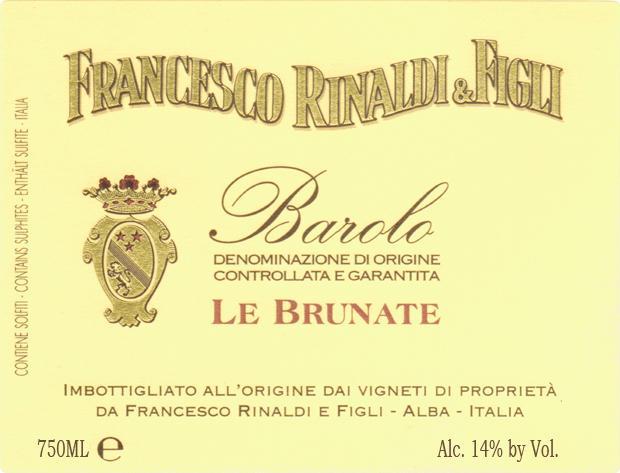2004 Barolo Nebbiolo
Francesco Rinaldi & Figli Le Brunate is a captivating red wine crafted from the esteemed Nebbiolo grape, hailing from the renowned Barolo region in Italy. This 2004 vintage showcases a full-bodied profile, offering a rich tapestry of flavors that unfold elegantly. With a pronounced acidity that invigorates the palate, this wine strikes a harmonious balance between firmness and structure, making it a remarkable example of Barolo's bold character. The fruit intensity is prominent, featuring alluring notes of dark cherry and rose petals, complemented by subtle earthy undertones and hints of tar. With its dry finish and notable tannins, Le Brunate is a wine that promises to evolve beautifully with age, exemplifying the exceptional qualities that Nebbiolo is celebrated for.
Francesco Rinaldi & Figli Le Brunate is a captivating red wine crafted from the esteemed Nebbiolo grape, hailing from the renowned Barolo region in Italy. This 2004 vintage showcases a full-bodied profile, offering a rich tapestry of flavors that unfold elegantly. With a pronounced acidity that invigorates the palate, this wine strikes a harmonious balance between firmness and structure, making it a remarkable example of Barolo's bold character. The fruit intensity is prominent, featuring alluring notes of dark cherry and rose petals, complemented by subtle earthy undertones and hints of tar. With its dry finish and notable tannins, Le Brunate is a wine that promises to evolve beautifully with age, exemplifying the exceptional qualities that Nebbiolo is celebrated for.




